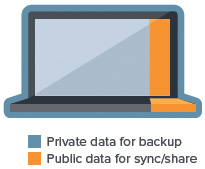Data loss is an unfortunate fact of life that can severely impact a business’s bottom line. By recognizing the importance of business continuity, Modern Mechanic ensures that our clients have the data they need to work effectively. Losing data happens everyday in all types of environments.
We have provided some sobering statistics on data loss in the US to better understand just how easy it is to lose crucial data.
50% of hard drives die within 5 years.
46% of users will lose data each year.
Over 30% of users have lost 100% of their files and information at one time.
According to CloudBackup’s facts about data loss, 20% of small to medium business will experience critical data loss every 5 years. About 70% of business people will experience data loss.
$49,000 is the average cost of a stolen laptop after factoring downtime, hardware costs, as well as the cost of stolen data.
How do we help clients avoid data loss? Modern Mechanic partnered with Code42 to provide our clients peace of mind when it comes to backing up their data. With CrashPlan, we are able to centrally manage our users and their backup archives. We recommend using the backup “Rule of Three”, which says that a user should have 3 copies of important data, on 3 different media formats (such as DVD’s+ Hard Drive, or Memory Stick + Cloud, etc.) and one off-site backup. Fortunately CrashPlan allows our users to follow the “rule of three” with their multi-destination backups. Our users can set up their CrashPlan application to backup multiple file sets to multiple locations such as the cloud, an external drive, or even another computer associated with their account. For more information about CrashPlan, visit Modern Mechanic’s blog post on Endpoint Backup using Crashplan.
Contact our specialists if you would like to find out how Modern Mechanic can help protect your company’s data.
"11 Stats on Data Loss You Need to Know." The Cloud to Cloud Backup Blog. N.p., n.d. Web. 21 Nov. 2014.
"Causes of Data Loss and Some Statistics | Backblaze Blog | The Life of a Cloud Backup Company." Backblaze Blog RSS. N.p., n.d. Web. 21 Nov. 2014.
"Data Loss Statistics." Cloud Backup. N.p., n.d. Web. 21 Nov. 2014.
"Data Loss Statistics." Data Loss and Data Backup Statistics? N.p., n.d. Web. 21 Nov. 2014.


